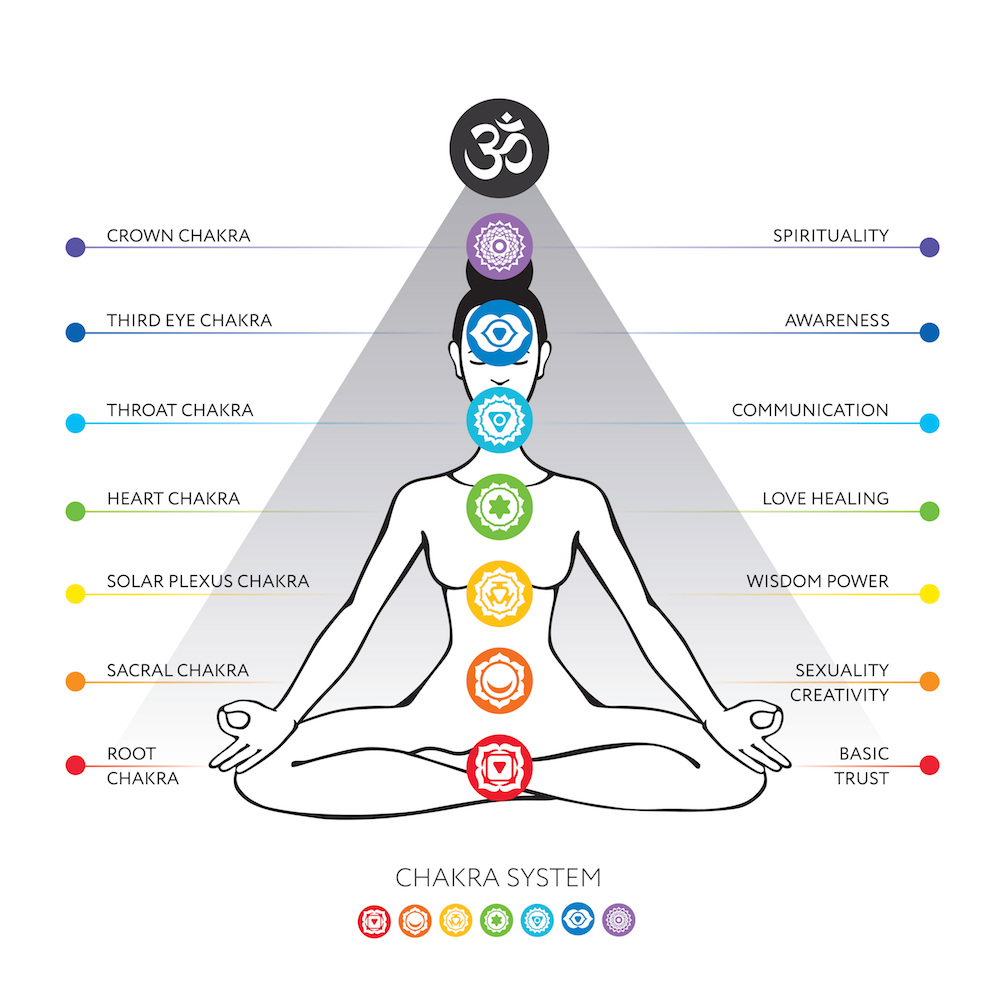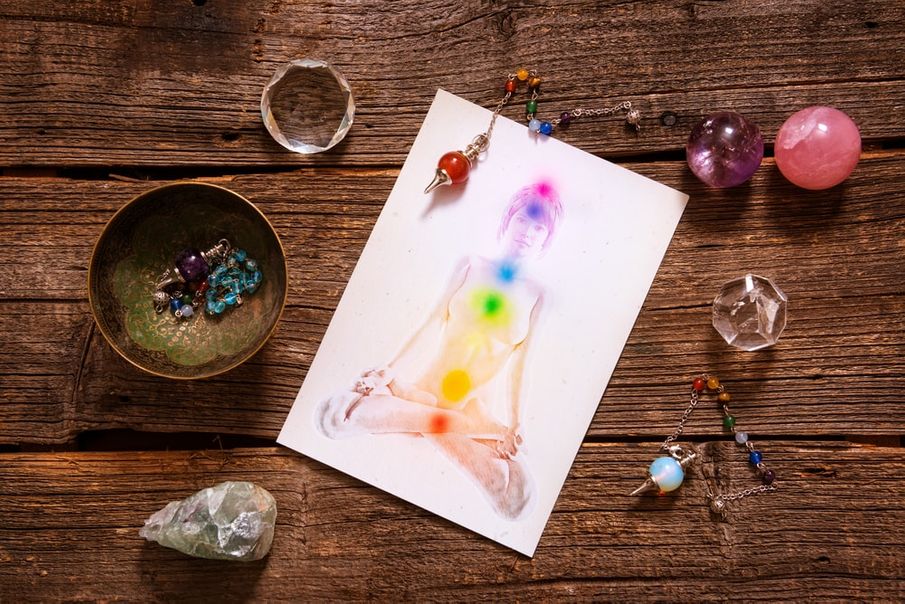The gentle art of channelling ‘universal energy’ through the body is considered a safe and non-invasive method of natural healing. But how exactly does it work?
Reiki is an increasingly popular alternative therapy choice, promoting a spiritual, holistic experience. The treatment encourages the idea of balance and harmony within the body, and while it’s spiritual, it’s not a religious experience so can be enjoyed by anyone. It’s found to be particularly effective for those looking to reduce stress or find relaxation, with practitioners believing that life energy flows through everything, and that stress and illnesses occur when this energy is obstructed. Through clearing and balancing these energies, overall health and wellbeing can be restored.
Practitioners believe that life energy flows through everything, and that stress and illnesses occur when this energy is obstructed
What is reiki?
Reiki is a Japanese healing technique, where a therapist uses hand movements and gentle touch to affect the body’s energy channels. It is considered holistic, addressing the body, mind and spirit, and falls into the category of energy healing.
The word reiki stems from two Japanese words, which, when combined, translate to ‘universal spiritual energy’. Practitioners are attuned to this, and can channel the universal life energy to help others, without affecting their own. Through the therapy’s ability to relax a person, it aims to reduce stress and stimulate healing with the energies aligned effectively.
There are three different levels of reiki, based on the practitioner’s attunement to the life energy. The first level is primarily focused on learning to be attuned with the energy, and practicing it on yourself. The second level is called ‘okuden’ and translates to ‘the deepening’, where you delve more deeply into your personal practice and can perform reiki on others, realising how to clear blockages in said energy. The third level is where you become a ‘reiki master’, and are at a level where you can then teach others the art. It would be expected that you would have spent a considerable amount of time at level two, engaging with patients and exploring the energy before choosing to become a master.
Where does it come from?
Reiki has existed since pre-Neolithic times, but it was brought into the present day by Tendai Buddhist Mikao Usui in Japan towards the end of the 19th century. Born in 1865, he came from a reasonably wealthy Buddhist family, studying at a traditional Buddhist Monastery, as well as mastering Samurai swordsmanship. He was a very open-minded individual, looking to learn about all sorts of medicine, religions, and energy, which led him to be interested in the idea of healing others in a way that wouldn’t deplete his own energy levels. He continued his studies in China to learn more about medicine, before returning to live in a monastery and discovering more about enlightenment. It is the combination of these ideas that led him to develop modern reiki, which primarily encourages you to heal yourself first, in order to be able to heal others. He went on to train people in the therapy, and pass on his knowledge of the art over the years.
The Western version of reiki (primarily used in Europe and the United States) is likely to have stemmed from Hawayo Takata, a woman who lived in Hawaii but had Japanese heritage. During a period of ill health in 1935, she visited family in Japan and sought treatment there. After being advised to have an operation, Hawayo instead believed a voice had told her there was an alternative way of healing. Her doctor informed her of a clinic offering reiki treatments, which she attended and had daily sessions. Within a few months, she found she was no longer unwell and felt so inspired by her situation that she trained in reiki herself, and later brought the therapy back to Hawaii in 1938. As World War II erupted across the Pacific Ocean, Takata slightly altered her reiki therapies and teachings to be more acceptable to Westerners, probably due to American mistrust of Japan at the time. Her art-form survived the war and continues to be practiced globally today.
For anyone feeling emotionally overwhelmed or disconnected, reiki can bring a sense of inner calm, much like with meditation
What’s the medical evidence?
There have been clinical trials evaluating the effectiveness of reiki in reducing pain, anxiety and stress. Research published in Holistic Nursing Practice by AL Baldwin et al. in March 2017 studied the effect of reiki on patients who were undergoing knee replacement surgery.
The study separated 46 patients into three groups. There was a reiki group, a placebo or ‘sham reiki’ group, and a ‘standard of care’ group. Only the group receiving reiki showed significant reductions in pain, anxiety, blood pressure and their respiration rates. This initial study was based on a very small group of participants, and so further investigation in a full-scale clinical study would be necessary in the future to find reliable data. The positive outlook from this trial does, however, suggest hope that in the future there could be medical evidence to support the use of alternative therapies in conjunction with traditional medicine.
How does it work?
Reiki is considered a safe and non-invasive method of natural healing. During a session, you can remain fully-clothed and lie on a treatment table, where the practitioner will place their hands either on your body or just above, in a series of light motions. The hand movements are made in association with the major chakras, which are believed to be the centres of our bodies that energy flows through.
Chakras open naturally during a reiki treatment, and through focusing on clearing any blockages to these energies, it is believed that the overall balance in the body is improved, leading to ailments clearing as well.

These can range from headaches and insomnia being focused around the head, to colds and arthritis through other various points on the body.
The experience itself is often described as quite an emotional release. The therapy encourages deep relaxation, and to let go of negative emotions such as fear and anxiety. For anyone feeling emotionally overwhelmed or disconnected it can bring a sense of inner calm, much like with meditation. Some people even describe feeling a radiant glow around themselves, all contributing to an overall positive effect on the mind and body. Improving your emotional wellbeing could affect your physical self as well, with anxiety often manifesting itself in headaches, an upset stomach or sore muscles.
The key difference with reiki compared to other forms of therapy is its non-invasive element, which makes it perfect for those who are uncomfortable with removing clothing, contact with needles, or applied pressure. If you respect personal boundaries, you may actually prefer reiki to other therapies.
When considering a reiki session, as with any therapy, it is vital to feel comfortable with your professional. Do some research and read reviews on therapists to see if they sound right for you. You can always give them a call first or pop into their clinic to make sure you connect. That way you’ll get the most out of your first reiki session.
Visit Therapy Directory to help you find a qualified reiki specialist in your local area. After a long week at work it might be just what you need to address the imbalance and bring some calming wellness back into your life.


Comments